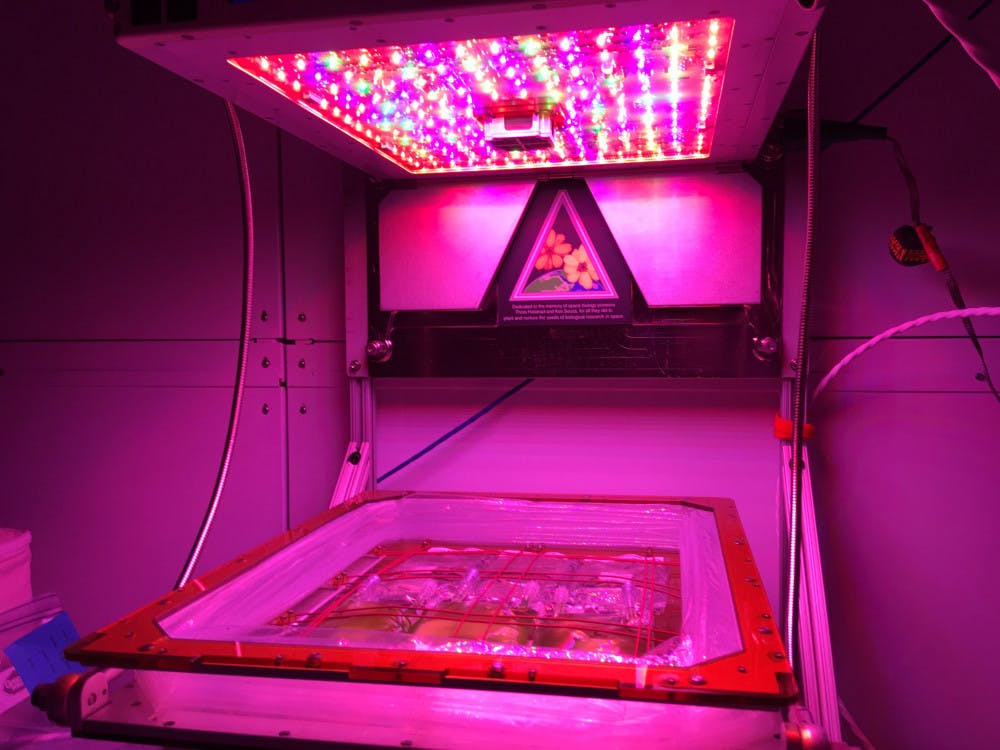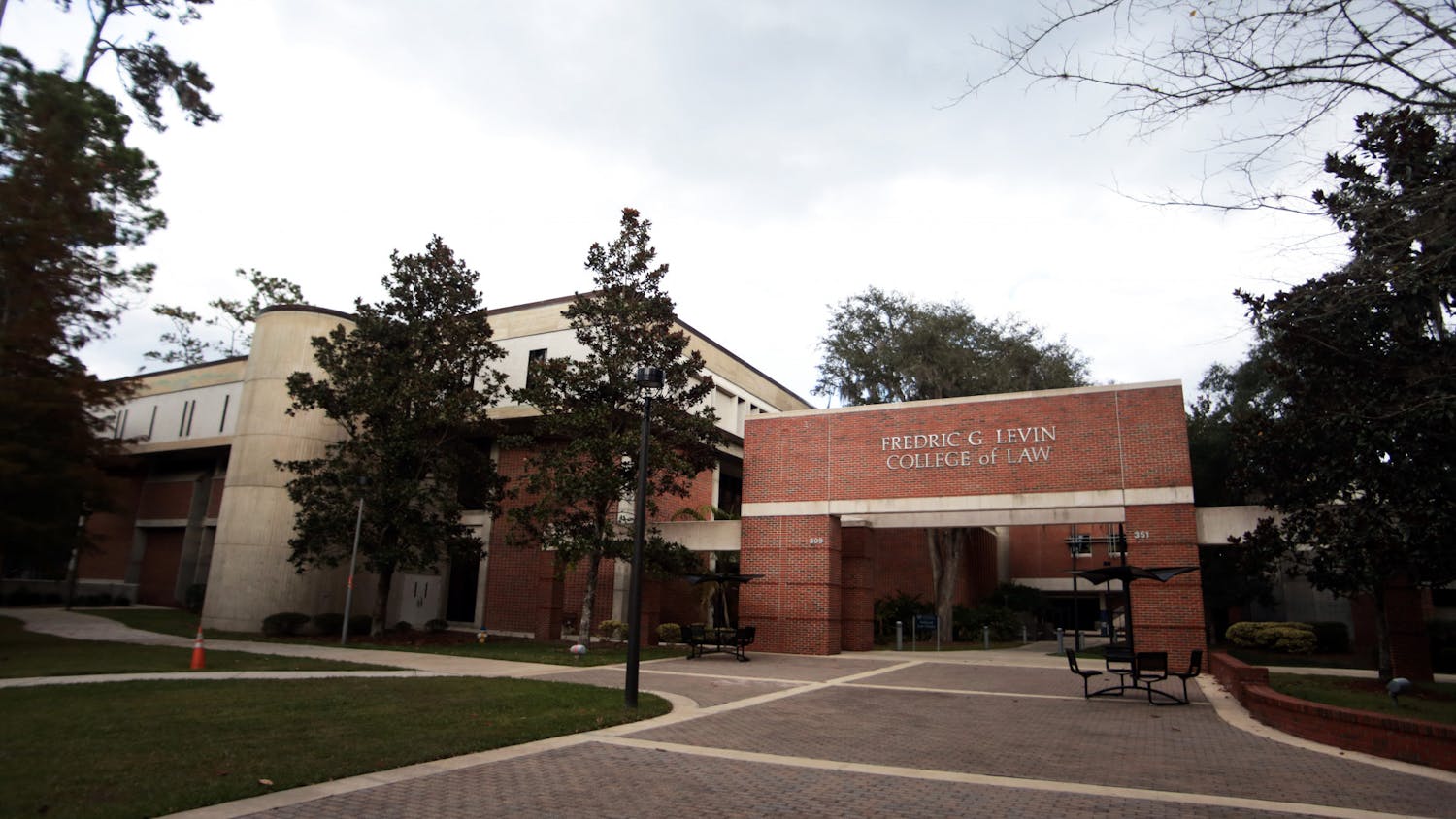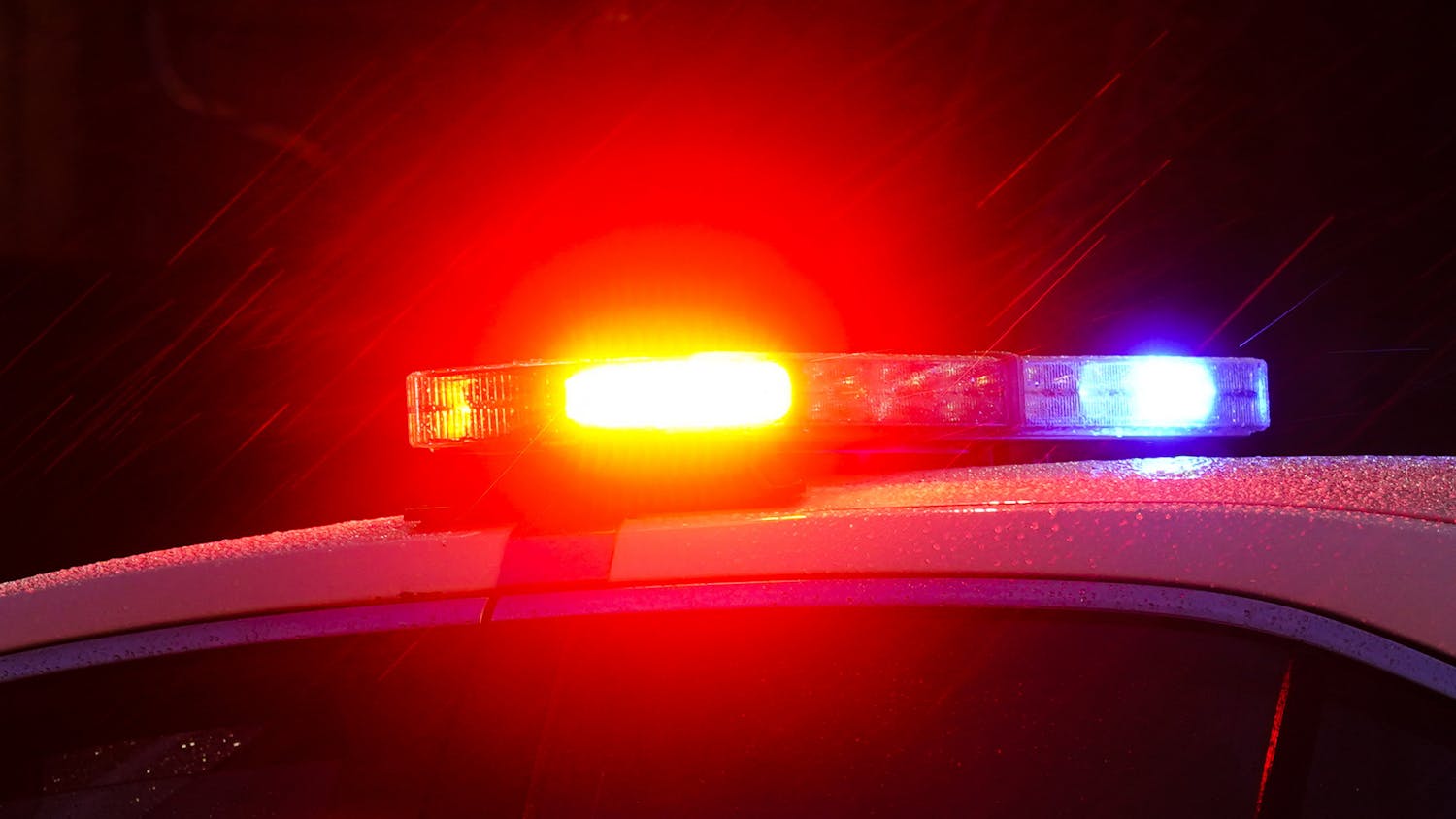Two UF scientists are preparing to begin an experiment testing algae’s growth in space with the potential for useful applications in long-term voyages.
June 29, a space shuttle launching from the Kennedy Space Center will carry a payload that includes the project of Junya Zhang, a post-doctorate student, and Mark Settles, a professor in the Horticultural Sciences Department.
Twenty-four bags containing algae, water and fertilizer will travel to the International Space Station for a month-long experiment testing changes in genetic structure in response to the conditions of space.
“It’s like something out of a science fiction film,” Settles said.
Zhang said they have been working on the project for a little over a year.
Settles first had the idea for the experiment when he served on the National Science Foundation grant panel. He had long been interested in synthetic biology, changing an organism’s genetic structure to make it more efficient, and the project had been something he wanted to pursue.
Settles said the experiment is different than ones from the 1980s, which monitored plant behaviour in space rather than genetic changes.
The project is being funded by the Florida Space Research Institute and the Center for the Advancement of Science in Space.
Settles said the FSRI awarded them $135,000 to fund the experiment. CASIS is paying for the payload integration, loading the bags into the space shuttle for safe travel. Settles did not know how much the integration will cost at the time of the interview.
Algae is the plant of choice because it is easy to grow, requiring less space than crops like wheat and 30 times less light to reproduce than corn.
The strain of algae being used is called Chlamydomonas Reinhardtii, the most studied algae type and the easiest to genetically manipulate.
The algae will be placed in small plastic bags roughly the size of a human hand. Two batches will be used for the experiment. One will stay on Earth at NASA’s testing facilities as a control group and the other is sent to the ISS.
Both batches will be placed under high-intensity LED lights to grow. The researchers will add water containing sodium, potassium, nitrogen and phosphorous to the bag for fertilizer.
Settles said they want to see if there is a mutation in the genetic structure in the batch grown in space compared with the batch on Earth. The goal is to see which genes are most important for quick, efficient growth in space.
The factors that would potentially change the genetic structure of the algae are the microgravity aboard the ISS and cosmic radiation.
Settles said algae may eventually be an important part of long space voyages, such as a 900-day round trip to Mars. The algae may be useful due to its nutritional value, potential to be used for building materials and consumption of carbon dioxide.
It contains key nutrients such as omega-3 fatty acids, amino acids, protein and antioxidants, Settles said. The only problem is the fishy, pungent smell it produces when made into an edible form, which is typically an encapsulated powder. Settles said that issue is being worked on.
Another strain of algae called Chlorella is also edible, but Settles said its genetic structure is much more difficult to work with, disqualifying it from the experiment.
Chlamydomonas Reinhardtii also can be used to make plastics. Algae responds to stress, like having too much nitrogen, by producing and storing oil as a food source in case of future stressors. Settles said the oil can be extracted and used to build materials aboard a spacecraft. An aspect of the experiment is to see if the stress response is triggered by microgravity.
Another issue of space travel is the amount of carbon dioxide on the ISS, which is ten times higher than on Earth, limiting the amount of physical activity astronauts can perform. Algae passively combats this problem by consuming carbon dioxide.
When the experiment concludes in late July, Zhang will pick up the algae in California, where the return shuttle will land.
Bags of algae grow under LED lights. They will be on the International Space Station for about a month.
The ground control unit houses a batch of algae that will remain on Earth as a control group in the experiment.
The algae are in the early stages of growth. Settles and Zhang will compare the genetic changes of the algae in space with those on Earth.






